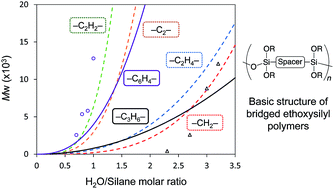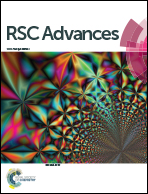Model-based research toward design of innovative materials: molecular weight prediction of bridged polysilsesquioxanes†
Abstract
Toward the design and manipulation of innovative materials, we propose a new concept called “model-based research (MBR)”. In MBR, measurable physical and chemical properties of materials are mathematically modelled by explanatory parameters obtained by computer simulation from an atomistic point of view. To demonstrate the potential of MBR, we modelled the molecular weights of a series of polysilsesquioxanes with respect to the H2O/silane molar ratio employed for the polymerization of monomers bis(triethoxysilyl)methane, ethane, ethylene, and acetylene (BTES-M, -E1, -E2, and -E3), as an example. The equation y = axn well reproduced the behaviour of the molecular weights of the BTES series, in which a and n were obtained using the calculated molecular parameters for monomers as the explanatory parameters. Detailed understanding and discussion were theoretically possible on the basis of the mathematical model. We predicted the molecular weights of polymers that would be obtained from monomers BTES-P and BTES-Ph with C3H6 and C6H4 as the spacer, respectively, using the mathematical model. Experimental validation of these polymers clearly showed the possibility of qualitative categorization. Our proposed concept, MBR, is a powerful tool to analyse materials science toward innovative materials design.



 Please wait while we load your content...
Please wait while we load your content...